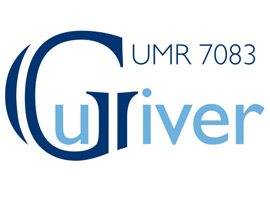
At the heart of these two projects: the Gulliver Laboratory
Florent Krzakala and Pierre Sens both work within the Gulliver Laboratory, which comprises several research teams. The reason why its name comes from the novel by Jonathan Swift is that the work there happily moves from nanometres to millimetres, from microscopic scale to macroscopic scale.
“The lab has a wealth of resources. I find this a great attraction,” explains Pierre Sens. “There is a dynamism to the laboratory, and in a way the entire lab helped me obtain my grant. We work together, but on different scales. What does the traditional mobility of cells become in microchannels? The question will soon arise, and I know that I can count on my colleagues.” “Yes, at Gulliver we readily share knowledge on problems in mathematics and problems in physics,” offers Florent Krzakala, before adding “Here, we develop projects which make it possible to draw on other fields, to find inspiration...” “That is very important for theoretical physicists like us,” stresses Pierre Sens. “We take care not to lock ourselves up in disciplinary orthodoxy.” “We have to go further,” they both confide.
Directed by Elie Raphaël, the Gulliver Laboratory is a mixed research unit run under the auspices of the CNRS and ESPCI ParisTech. “2012 was a very fruitful year for the lab,” he tells us. “I am delighted with the award of these two grants, which demonstrate international scientific recognition for these two researchers. It will enhance dynamic excellence for the entire laboratory, allowing the development of new subject areas.”
The research carried out at Gulliver essentially relates to soft matter and applied statistical physics, from the development of new theoretical and numerical approaches, through the development of model experiments, to technological applications.
The interaction between theoreticians and experimentalists plays an essential part in the scientific dynamism of Gulliver. Another important mandate of the laboratory is the training of young students.
The laboratory is made up of 4 teams, in which 45 people work every day:
– Theoretical Physical Chemistry, lead by Anthony Maggs,
– Microfluidics, MEMS and Nanostructure, lead by Patrick Tabeling,
– Nanobiophysics, lead by Ulrich Bockelmann,
– Collective Effects & Soft Matter, lead by Olivier Dauchot.
Related articles
The homepage of Pierre Sens
The homepage of Florent Krzakala
Le website of the Gulliver Laboratory
Le website of the ERC
Le website of the HFSP







